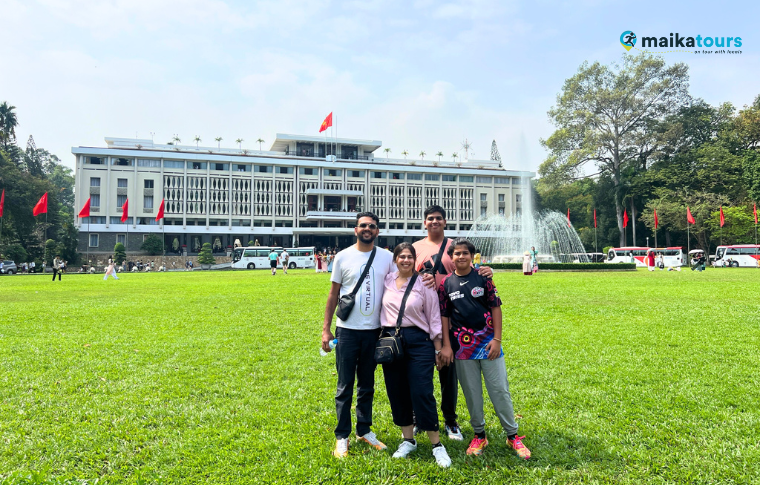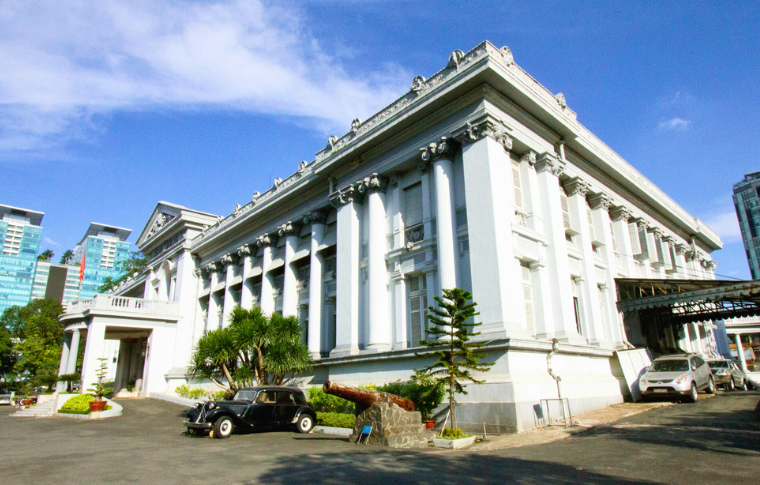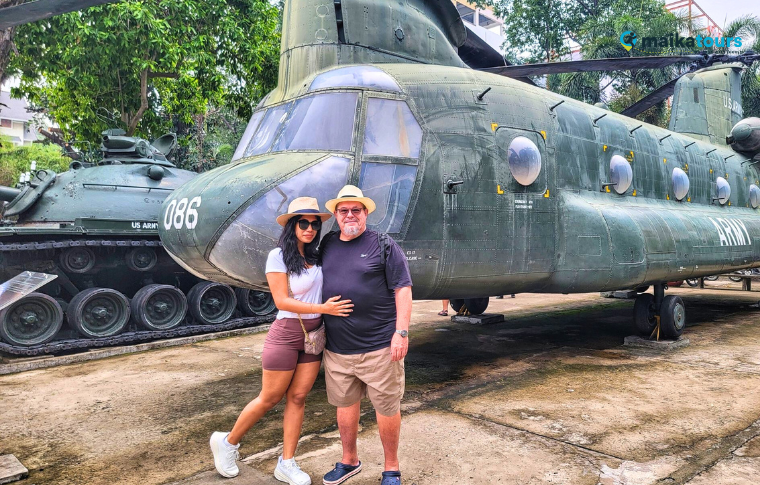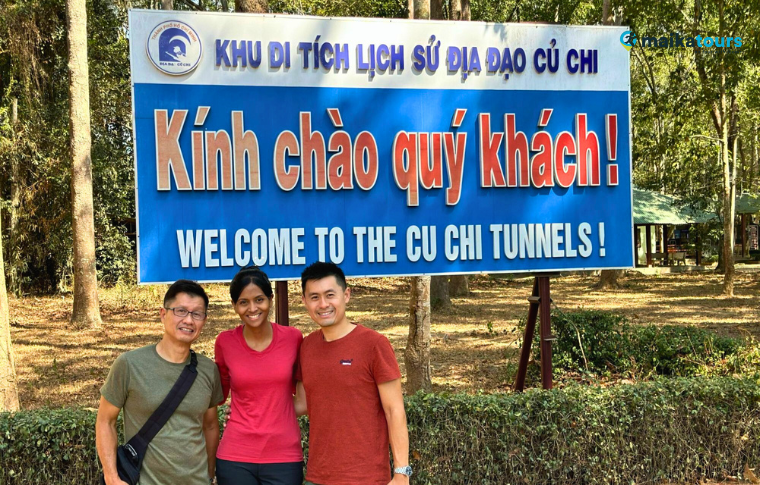A Comprehensive Guide to the War Remnants Museum in Ho Chi Minh City

One of Vietnam’s most famous museums, the War Remnants Museum evokes strong emotions as visitors start to delve into numerous displays depicting the tragedies of war. Read on to know the reasons that make the War Remnants Museum a must-see destination for history buffs and anyone looking for a unique educational experience.
Contents
An overview of the War Remnants Museum

The War Remnants Museum stands as an important historical site in Vietnam, offering a touching and educational experience for any visitors to Ho Chi Minh City. The museum collects, preserves, and displays documents, images, and artifacts to depict the shocking consequences of the war in this battle-torn country. At the same time, it highlights the fighting spirit and heroism of the whole nation.
History of the War Remnants Museum
The museum was established following the reunification of North and South Vietnam on April 30, 1975, as part of an effort to preserve the nation’s heroic legacy of resistance and struggle during the Vietnam War.
The Vietnam War, also known as the American War in Vietnam (or the War against the Americans to Save the Nation), extended over the period from 1955 to 1975, was marked by the intense U.S. involvement beginning in the early 1960s. It was also part of a broader conflict and a direct manifestation of the Cold War struggle between the United States and the Soviet Union.
The war left a vast impact on Vietnamese society for years after. In addition to casualties, the country was left deeply scarred by bombed-out landscapes, defoliated forests, and the long-term consequences of chemical warfare.
On September 4, 1975, the new government established the Exhibition House for US and Puppet Crimes. On November 10, 1990, it was renamed the War Crimes of Aggression Exhibition House. It wasn’t until July 4, 1990 that the museum adopted the name it uses today – the War Remnants Museum. The museum is now managed by the Department of Culture and Sports of Ho Chi Minh City, and has become an essential museum for many international visitors.
Essential information for visitors
Before making a trip to the War Remnants Museum, take into account some essential information below to create a smooth travel experience.
• Address: The address of the museum is 28 Vo Van Tan Street, Ward 6, District 3. It is only a 6-minute drive from Ben Thanh Market.
• Opening hours: The War Remnants Museum opens from 7.30 a.m. to 5.30 p.m. every day, including weekends and public holidays. Please note that the ticket counter is closed at 5 p.m., so you should arrive earlier than that to ensure you have time to buy the tickets.
• Official website: You can check out their official website here for latest updates on the museum’s exhibits, opening hours, and visitor guidelines.
• Ticket price: An adult ticket to the War Remnants Museum costs VND 40,000, which is less than USD 2. Children under 6 enjoy free entry, and children aged 6-15 pay half the adult price. This is obviously not a concern for travellers. The museum even offers special discounts for groups and families, so it’s advised that you check their official website for the latest deals.
• Audio guide: Audio guides are available for rent at the museum, and they will help you gain a better understanding of the exhibits and the stories behind them.
• Dress code: There is no official dress code for the War Remnants Museum. You can wear as freely as you want. However, dressing modestly is recommended as a sign of respect for the local culture and people.
• Photography rules: Photography is allowed in most areas, but avoid using flash. Some parts of the museum may have limited access and not allow for photography, so always check the signs or consult the staff.
• Best time to visit: The War Remnants Museum is usually crowded during the weekends and public holidays when Vietnamese students and locals gather together as part of educational trips or family outings. If you want some quiet time to reflect on the exhibits, consider making your visit on weekdays.
• How to get to the War Remnants Museum: The museum is centrally located in Ho Chi Minh City, and it can be easily reached by public bus (No.6 from Cho Lon Bus Station or No.28 from Ben Thanh Market) or by taxi (Vinasun, Mai Linh, Xanh SM, etc.).
» Read more on Ho Chi Minh City Travel Tips: What To Know Before Your Visit?
War Remnants Museum visitor map
The layout of the War Remnants Museum is divided into three floors, with a variety of exhibits to give you a glimpse into the tragic wartime in Vietnam. All photographs, artifacts, and military equipment vividly recount the war and its long-lasting effects on the country.
Here is a detailed map showcasing the various exhibition themes at the War Remnants Museum:

1. The ground floor
The ground floor presents the eye-opening theme ‘A Voice Against the Unjust War,’ featuring over 100 photographs together with 145 documents and artifacts depicting the world’s support for Vietnam’s resistance against the US (1954-1975). Through compelling visuals of rallies, demonstrations, conferences, and seminars held across the globe, the display highlights widespread support for Vietnam’s struggle for justice.
You will also see the themed exhibition ‘The Prison Regime During the War of Aggression in Vietnam,’ which reveals the harsh realities faced by Vietnamese political prisoners held in these oppressive facilities. With prison models, disturbing images, and torture devices on display, this section evokes powerful emotions and a haunting glimpse into what many have called “hell on earth.”
2. The first floor
The first floor of the museum is home to a wide collection of photographs, many of which are distressing to visitors and serve as a powerful reminder of the brutal realities of war. The two stunning exhibitions are “Crimes of the War of Aggression,” with 125 photos, 22 documents, and 243 artifacts and “Consequences of Agent Orange” detailing the devastation caused by the toxic chemical.
The War Remnants Museum also presents haunting exhibits on the My Lai Massacre and other war crimes, including the iconic and deeply moving photograph named ‘Napalm Girl’ (officially known as The Terror of War), one of the most indelible images of the US war in Vietnam.
3. The second floor
On the second floor, visitors can see several compelling exhibitions, one of which is “Historic Facts,” a thematic display of 66 photographs, 20 documents, and 153 artifacts that emphasise the period of French colonialism and American intervention in Vietnam. Another notable exhibition, “Reminiscence,” pays tribute to journalists who perished while reporting on the Indochina War. Their striking photographs vividly portray the harsh truths of the battlefield.
Visitors also find two more thought-provoking exhibitions on this level: “Vietnam – War and Peace” and “Agent Orange in the Vietnam War” with evocative photojournalism by Japanese photographers Ishikawa Bunyo and Goro Nakamura. This is an opportunity to gain a deeply human perspective on life during wartime and the Vietnamese people’s ongoing journey towards peace.
4. The outdoor section
Right after the front gate of the War Remnants Museum, you will see large military vehicles used by the U.S. Army during the war, such as heavy helicopters and aircraft of the U.S. Air Force and bulletproof tanks placed in the yard. You can see the M48 Patton tank, the F-5 fighter jet, a UH-1 “Huey” helicopter, an A-1 Skyraider attack aircraft, and many more. There are also numerous kinds of weapons, including rockets, mines, and bombs on display.
In the back, a small entrance leads to the Tiger Cages – a reproduction of the real Tiger Cages used in Con Dao Prison. The Tiger Cages were hidden wire enclosures used by the South Vietnamese government to confine political prisoners in brutal, inhumane conditions. Through a tiger cage on gravels, statues of malnourished prisoners inside two dark cells, and a series of stark black-and-white photographs from that era, the exhibition delivers a confronting insight into the inhumane treatment during the conflict.
Nearby Attractions
The War Remnants Museum is centrally located in District 3, which makes it easy to access other landmarks in the city centre. After spending some quiet moments at the museum, you can continue your visit with stops at the following notable sites.
1. Independence Palace

√ Address: 135 Nam Ky Khoi Nghia Street, Ben Thanh Ward, District 1
√ Opening hours: 8 a.m. – 3.30 p.m. daily
From the War Remnants Museum to Independence Palace, it’s an easy and pleasant walk of about 550 metres. Alternatively, you can take a taxi, which is also very cheap, around VND 70,000. The Independence Palace is an important landmark in Ho Chi Minh City with historic architecture and preserved wartime relics that tell you the city’s storied past.
Once you enter the Independence Palace, feel free to go in any direction you wish and discover any section in and out of the palace. The site invites visitors to unveil layers of history, highlighting the pivotal moment marking the reunification of the two parts of the country.
2. Central Post Office
√ Address: 2 Cong Xa Paris Street, Ben Nghe Ward, District 1
√ Opening hours: 7.30 a.m. – 6 p.m. (Monday – Sunday) and 8 a.m. – 5 p.m. (Sunday)
The Saigon Central Post Office stands out with its grand building, showcasing exquisite French colonial architecture. Not merely a functioning post office, Saigon Central Post Office is also Ho Chi Minh City’s unparalleled historical gem. Don’t simply sightsee and take photos, you can buy some local souvenirs, such as beautifully designed postcards, collectible stamps, miniature models, and other unique memorabilia that capture the essence of the site.
Besides, one of the many perks of visiting the Central Post Office is that you can easily walk to the Notre Dame Cathedral, which is just across the street. Modelled on the iconic Notre Dame de Paris, the one in Ho Chi Minh City was originally built with all materials imported from France. It is one of the best Catholic churches that any visitor should visit while wandering the city.
Read more on Full-Day Ho Chi Minh City Tour for a well-crafted tour that includes the War Remnants Museum and other iconic attractions, such as the Independence Palace, the Notre Dame Cathedral, the Central Post Office, the Thien Hau Temple, Ho Thi Ky Flower Market and many more.
3. Tao Dan Park
√ Address: 55C Nguyen Thi Minh Khai, Ben Thanh Ward, District 1
√ Opening hours: 7 a.m. – 10 p.m. daily
A rejuvenating oasis amid the hustle and bustle of Ho Chi Minh City, Tao Dan Park spans 10 hectares and is adorned with over 1,000 trees. With serene atmosphere and lush greenery, the park is a perfect spot for a leisurely stroll or a relaxing picnic. Visiting Tao Dan Park, you can see the solemn Temple of Hung Kings and the historic Champa Temple. Seasonal plant exhibitions are usually held at the park, especially during Tet and other public holidays. If you come during this period, you will be warmly welcomed with vibrant colours and festive charm in the park and its surroundings.
The park is free to enter, and if you pass by in the early morning, you will likely see locals engaging in their daily exercises. Tao Dan Park promises to offer a great change of pace after your visit in the War Remnants Museum, where haunting photos may be disturbing.
4. Museum of Ho Chi Minh City

√ Address: 65 Ly Tu Trong, Ben Nghe Ward, District 1
√ Opening hours: 8 a.m. – 5 p.m.
Sometimes mistaken for the museum located near the Dragon House in District 4, the Museum of Ho Chi Minh City in District 1 is a two-storey building characterised by unique symmetry and Renaissance design. Inside the museum, you will find 9 specialised exhibition zones, each of which tells different stories about the formation and development of Ho Chi Minh City.
If you are a big fan of museums, don’t miss out on the opportunity to combine this museum with the War Remnants Museum. The two will give you a deep understanding of the city and its complex history. Don’t worry about the two experiences being the same or boring, you will find each place has its own unique charm and memorable highlights.
» Read more on 8 Essential Museums in Ho Chi Minh City
Tips for visitors visiting the War Remnants Museum

It’s not challenging to plan for a smooth visit to the War Remnants Museum, provided, of course, you carefully research essential information and have a clear visit plan.
1. Best time to visit the War Remnants Museum
You can visit the War Remnants Museum all year round as your visit won’t depend on the weather conditions. The indoor exhibitions are ideal to visit, whether it’s sunny or rainy, and you can enjoy the museum even more when it rains and fewer visitors come.
Be prepared that the museum is usually crowded on the weekends and public holidays, particularly on historic events like the Reunification Day (April 30) or National Day (September 2). It’s best to schedule a visit in the early morning to avoid the crowds and view the exhibits more thoroughly.
2. Allocate time effectively for each exhibition
The time spent at a museum ideally should be no longer than two hours, and there’s no exception for the War Remnants Museum. If you stay longer, you will easily get tired, not to mention not having enough time for other activities in your itinerary.
Researching the museum’s layout in advance can greatly save your time deciding on which areas to focus on and which to skip. It’s easy to lose track of time for a touching story behind your favourite exhibit, so remember to adjust your time accordingly so that your visit can cover all must-see parts of the museum.
3. Dress appropriately
Although there is no dress code for the War Remnants Museum, you should always dress modestly and comfortably. Bear in mind that you will likely be doing lots of walking, so choose comfortable footwear that won’t hurt your feet. Also, avoid tight clothing that makes it difficult to move around in during your museum outing.
The weather in Ho Chi Minh City can be extremely hot during summer months and it can suffocate indoors with many visitors at the same time. Therefore, you should choose breathable fabrics that absorb sweat effectively, such as cotton, bamboo, linen, etc.
4. Kid-friendly experience
Is the War Remnants Museum suitable for kids? The answer is that it depends on how much you want to expose the kids and their own capacity to process shocking imagery. Generally, if your kids are at least 8 years old, there’s no need to worry about the visit and it can help to put war into perspective for them. However, if you’re not comfortable letting your kids be exposed to a sheer number of bombs, bullets, guns, and deadly weapons, you should really reconsider the visit. If you book a private tour, talk to your guide in advance to decide which parts of the museum are better to skip.
» Read more on A Family-Friendly Guide to Ho Chi Minh City
War Remnants Museum and Cu Chi Tunnels

Those visiting the War Remnants Museum should not skip the Cu Chi Tunnels as both places are vital for better understanding Vietnam’s tumultuous past. The two destinations, of course, can be conveniently explored on the same day. Take a look at our curated itinerary covering both the War Remnants Museum and Cu Chi Tunnels.
• Cu Chi Tunnels
In the early morning, set out on a journey to the Cu Chi Tunnels (either via Ben Duoc or Ben Dinh) in the northwest of Ho Chi Minh City. Most travellers choose to visit Ben Dinh due to its close distance to the city centre, but Cu Chi Tunnels Ben Duoc is also worth visiting for its larger size and more zones to explore. After roughly 2 – 2.5 hours, you will arrive at the tunnels, getting ready for an exciting crawling experience through the intricate underground tunnels. If you’re afraid of tight spaces and darkness, feel free to stroll around the site, discovering exhibits on the ground. In addition to the underground experience, you can enjoy a culinary delight by savouring Cu Chi’s staple – steamed cassava served with sesame and salt.
» Read more on Beneath the Surface: Are the Cu Chi Tunnels Worth Visiting?
• Local Rubber Tapping Facility
On the way, explore a rubber tapping facility to learn how latex is extracted from a rubber tree. Following your visit to the rubber plantation, make a short stop to sample a delectable lunch of traditional Vietnamese food, such as Pho or Banh Mi.
• War Remnants Museum
Journey back to the city centre, you will visit the War Remnants Museum to learn about the country’s turbulent past through powerful exhibits and photographs. If time permits, you can visit the city’s iconic landmarks, such as the Central Post Office, Notre Dame Cathedral, Saigon Opera House, etc.
» Read more on Cu Chi, Ben Dinh Tunnels & War Remnants Museum Tour – Private & Small-Group Tour
In a place like Vietnam, where the tragic events of the 20th century can still feel raw, a quick history lesson at the War Remnants Museum helps you know better about the past war from different perspectives. Contact us for a personalised itinerary covering the War Remnants Museum and many other spots that reveal layers of Vietnam’s vivid culture and history.